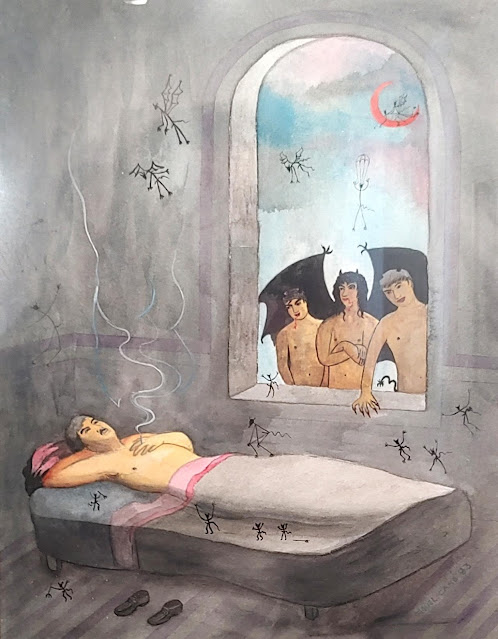By Patricia Frischer
Creative Economy Report: Key
Findings
City of San Diego and San Diego Regional Policy & Innovation Center just published their full report with the headline that $10.8 billion dollars was generated in San Diego by the Creative Business and Non-Profit communities. The data is from 2022. The report is heavy going to read but they presented some key finding which I have tried to translate from data-speak to regular English. There are no stories included in the report and no illustrations…very sad for a creative industry report! These figures are not drawn from the Arts and Economic Prosperity 6 County-Wide Unveiling – Advocating locally for the Arts (Picked RAW Peeled by Patricia Frischer) report which is only about non-profit arts and culture. The summary below is only for the City of San Diego and is a combined report of for-profit and non-profit entities.
At $10.8 billion dollars, the creative industries are 3.7%
of the county’s gross regional product (GRP) in 2022—supporting total jobs
across the county economy of almost 170,000, including 82,467 direct creative
economy jobs, and nearly 87,000 indirect jobs.
The creative economy as a proportion of San Diego’s
regional economy has been steadily shrinking over the past ten years, hitting
its lowest point in 2021 at 3.51% of GRP before starting to bounce back to 2019
levels in 2022.
Digital Media, of the thirteen industry groups studied, contributed
the largest to San Diego’s total GRP, while the Printing and Publishing sector
suffered job losses. The number of creative firms in the region has not bounced
back after the pandemic, with 6,179 firms in 2022 compared to 7,386 firms in
2019.
In San Diego, average annual earnings in the creative
economy rose across all creative industries between 2012 and 2022 (averaging
from $46,808 to $64,663). However, pay is very variable with high-earning
creatives working in Digital Media ($156,497) and Communication Arts ($97,351),
but lower-earning creatives working in Visual & Performing Arts ($28,594)
and Fine and Performing Arts Schools ($22,475).
With 58% white, and 55% male in the arts, compared to a
county population of 43% White and 50% men, it is revealed that Black,
Hispanic, and Asian are underrepresented. But over the past ten years, that
percentage has been increasing substantially in the right direction. There are
still equity issues in the creative economy maintained by management and
employers, not by employees or self-employed.
Surprisingly, the high cost of living, government
regulations and limited work space does not stop talent from coming here but it
does not keep it here. Self-employment is a growing sector but that makes for a
less stable life. Over 80% of creative businesses are small businesses with
less than 20 employees, and almost all (97.7%) are for-profit, and only 2.3% is
nonprofit.
To address some of these concerns and tap the great potential
of our region it was suggested we need to:
Provide Affordable Housing and working spaces
Create incentives to grow creative business so they can have more full time
employees and a more stable income
Review regulations that increase cost
Ensure more funding from government and the corporate sector
Add More networking and collaborations opportunities to create a sense of
community
Create Art as a career in curriculums
Encourage paid internships and apprenticeships
Increase the awareness of the region’s arts locally, nationally and
internationally
Integrate the creative economy into the Economic Development strategies
Help pay for memberships to professional organizations
Americans for the Arts Advocacy 101: Advocating for the Arts in 2024 Picked RAW Peeled by Patricia Frischer













































